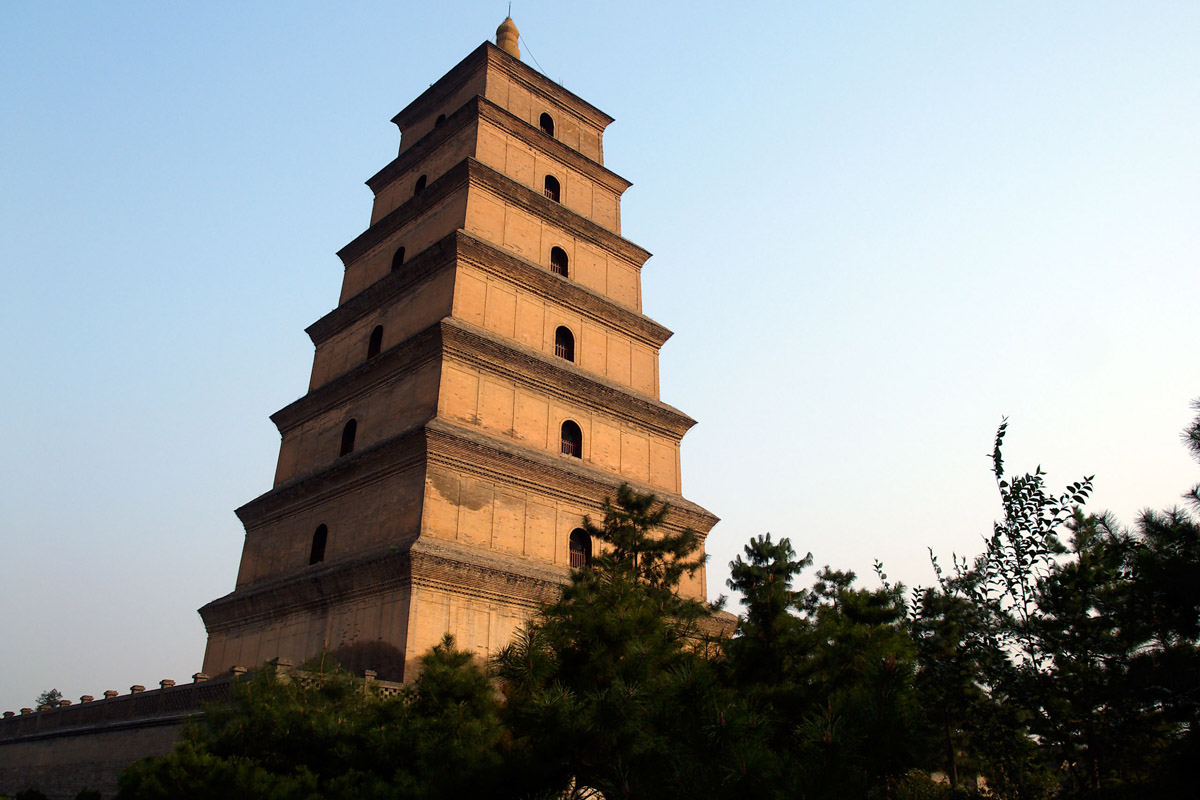 Tourist groups that visit the Terra Cotta Warriors inevitably visit Xian’s other famous landmark, the Wild Goose Pagoda, an icon central to the development of Chinese Buddhism. In this post I will explore why the Wild Goose Pagoda is such an object of pride for the city of Xian, and its role in Chinese Buddhism’s development.
Tourist groups that visit the Terra Cotta Warriors inevitably visit Xian’s other famous landmark, the Wild Goose Pagoda, an icon central to the development of Chinese Buddhism. In this post I will explore why the Wild Goose Pagoda is such an object of pride for the city of Xian, and its role in Chinese Buddhism’s development.
For centuries, Buddhism entered China along the Silk Road, the legendary trade route that stretched from ancient Rome to Xian. This trade route passed directly through the region where Mahayana Buddhism developed, serving to convey Mahayana teachings to China.
Dharmaraksa was a monk who grew up in Dunhuang, an important city on the Silk Road now famous for its Buddhist grottos. He was one of the earliest and most prolific translators of Buddhist scriptures into Chinese, translating altogether more than 150 sutras into that language. Dharmaraksa taught in Xian, helping make that city one of the most important centers of early Chinese Buddhist learning.
But the translation and study of Buddhist scriptures in China was not a smooth historical process. Differences in doctrine caused sharp clashes between different Buddhist groups. During this initial phase of Chinese Buddhism there was confusion about which scriptures were authentic and which scriptures were apocryphal. The arrival of the Mahaparanirvana Sutra, translated by another monk who lived at Dunhuang named Dharmaksema, caused uproar in the religious scene. That sutra taught the doctrine of buddhanature, an idea that sparked immense controversy. This created a major division between so-called Hinayana and Mahayana schools. Hinayana doctrine held that certain people, called icchantikas, were inherently incapable of becoming buddhas due to their incorrigibly evil nature (think sociopaths).
By the late 6th century, the confusion surrounding Buddhist scriptures prompted the famous monk Xuanzang to travel from China to South Asia in search of the “true” Buddhist doctrine. Xuanzang’s arduous journey over mountains and deserts eventually resulted in his return with important sutras that helped clarify the situation.
At one point, when Xuanzang was near death by thirst in the desert, a wild goose led him to an oasis where the pure water saved his life. When Xuanzang finally returned to Xian, the emperor built a grand pagoda where the new scriptures were stored and translated. Xuanzang honored the goose that saved him by naming the pagoda after that auspicious animal. Today, the Wild Goose Pagoda remains to commemorate Xuanzang’s famous quest in search of the True Dharma.
—Andy Ferguson
This post is part of author and scholar Andy Ferguson’s new “Consider the Source” series. As an old Chinese saying goes, “When drinking water, consider the source.” In the coming weeks, Ferguson will ask and answer seemingly simple (but in the end, profound) questions about the “source” of East Asian Buddhism, weaving a tale of both spiritual inspiration and political intrigue.
This fall, Tricycle will be traveling to the source itself, China, in a special pilgrimage led by Ferguson and abbot of the Village Zendo Roshi Pat Enkyo O’Hara. Want to come with us? Click here for more information.
Ferguson is the author of Zen’s Chinese Heritage: The Masters and their Teachings, which is used widely by Western Zen teachers, and Tracking Bodhidharma, which offers a wealth of new information about the founder of Chinese Zen Buddhism.
Thank you for subscribing to Tricycle! As a nonprofit, we depend on readers like you to keep Buddhist teachings and practices widely available.